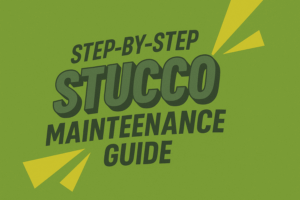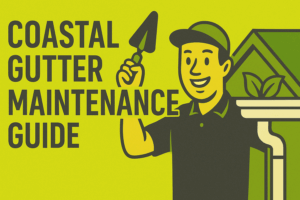Bridge Loans in Texas: How to Unlock Home Equity to Buy Before You Sell
It’s a common struggle for many Texas homeowners: you’ve finally found that dream home that checks all the right boxes, but you don’t have enough cash on hand yet. Beyond the financial uncertainty, you fear losing the perfect property to another buyer as you grapple with getting your current home sold in a sluggish market plagued by the housing shortage. While this can be incredibly frustrating, there’s a smart solution for your situation: a bridge loan.
A bridge loan is a short-term financing option that helps homeowners buy a new property before selling their current one.
In this post, we’ll unpack this solution and how you can put it to work for you.
DISCLAIMER: As a friendly reminder, this post is intended for educational purposes, not financial advice. If you need assistance navigating the use of a bridge loan in Texas, HomeLight encourages you to reach out to your own advisor.
What is a bridge loan, in simple words?
A bridge loan is a short-term loan used in real estate transactions, enabling homeowners to purchase a new home before their current house sells. Also called a swing loan or bridging loan, it allows a homeowner to leverage the equity in the home they’re selling to provide the funds for a down payment and closing costs on their new house.
As Don Keeton, a top-performing real estate agent with 48 years of experience, says, with a bridge loan, “you can tap the equity of your current home before you’ve sold it.”
Although it’s often more expensive than a traditional mortgage, a bridge loan can hasten the process with added convenience. According to the National Association of Realtors, 53% of repeat buyers finance their next home purchase using proceeds from their previous sale. With a bridge loan, you can buy your next home without waiting for the current one to sell.
How does a bridge loan work in Texas?
If a Texas buyer has found “the” house before selling their current home, using the equity accrued in the existing home to cover the down payment and closing costs can be an excellent option to avoid letting that dream house slip away.
Bridge loans are short-term, emphasis on “short.” Also called interim loans or gap financing, most include terms from six months to one year and are expected to be repaid as soon as you sell your current home. Think of them as bridging the gap between when you need the money to buy a new house and when you receive money from the sale of your current home.
Because of their short-term nature and the risks involved in selling your current home, interest rates are generally higher with them than with a mortgage. But there are similarities. For example, you may have to pay an origination fee, and you might be able to use the same lender servicing your new mortgage, although not all traditional lenders offer bridge loans.
That lender may calculate your debt-to-income ratio (DTI) to qualify you for a bridge loan. This DTI could include your current mortgage payment, the mortgage payment on the new home if it’s not under contract with a buyer, and the interest-only payment on the bridge loan.
What are the benefits of a bridge loan in Texas?
A bridge loan offers valuable benefits for Texas homeowners navigating the competitive real estate market, where median housing prices range from $311,140 in cities like San Antonio to $438,278 in areas like Austin-Round Rock. With a bridge loan, you can unlock the equity in your current home and make a strong offer on your dream property without the stress of waiting for the old one to sell. You get to move quickly in a fast-paced market and not miss out on valuable opportunities.
If you’ve already found your dream home, consider getting a bridge loan while preparing to sell. Let’s review the upsides of this financing option:
You can make a non-contingent offer on your new home
When an offer is contingent upon the buyer selling their current home, it’s not as competitive as a non-contingent offer. A contingency is a term or condition that must be met before the sale can be completed. Many buyers with a home to sell include a sales contingency on their offers. In a competitive seller’s market, the seller may prefer a “clean” offer, free of contingencies, to hasten the sale.
51% of all buyers already own a home, so contingencies are common. While only around 5% of contracts are terminated due to contingency issues, many sellers still prefer to accept offers without contingencies.
Heidi Daunt, branch manager and owner of Treehouse Mortgage Group, says, “If you have an approved bridge loan, you can write a non-contingent offer, so it gives you better negotiating power on your new purchase.”
According to Keeton, “If you go to a seller and say, ‘Would you wait until I sell my house?’ in today’s market, they’ll probably say ‘No.’ A bridge loan is a way for you to take control of that house so you don’t lose it to another buyer.”
You only have to move once
If the homeowner has sold their home before being able to purchase a new one, they may be forced to move into a short-term rental. In addition to the added inconvenience of moving twice, there may be extra expenses. According to Move.org, the average cost for a move is $9,060. Multiply that by two if you have to find a temporary home because you don’t have a bridge loan to move directly into your new house.
“Sometimes what you have to do is sell your house, move to an apartment, buy another house, and then move again. A bridge loan helps avoid that,” Keeton says, who works with over 75% more single-family homes than the average agent in his market.
You can prepare your old home for sale after moving out
If the seller uses a bridge loan to move into their new home, it can give them a clean slate to get their old home ready to list with less pressure.
Some lenders don’t require payments during the loan period
If you get a lender who allows a grace period to defer payments or who charges interest-only on a bridge loan, it can ease the financial pain and make a bridge loan even more convenient.
You can get funding for materials and equipment for construction.
If the new house you’re moving to is new construction or a renovation, a bridge loan can provide funding to purchase materials and equipment to do the work.




